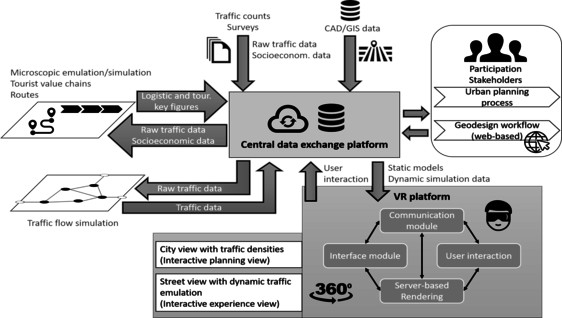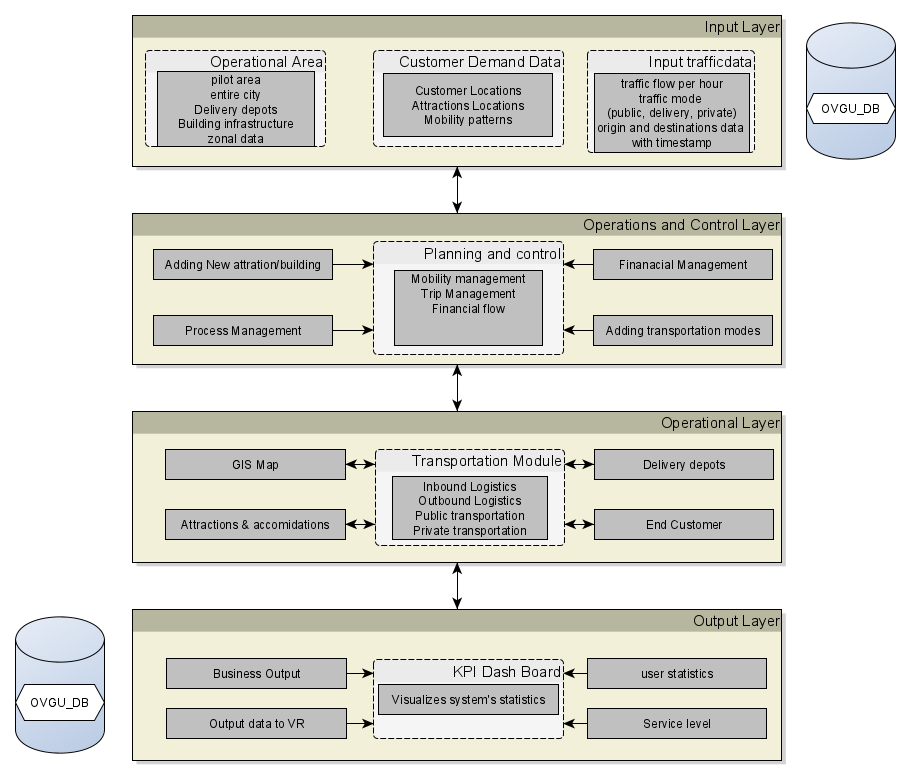General data requirements for simulation model
The main aim of simulation modeling is to study real-world scenarios in a virtual world. It helps in planning the most complex processes, which involve huge costs. As a part of this project, we want to implement simulation-based planning for human-centered urban logistics (SiPuL). The figure below presents the subprojects of the other partners. As a part of SiPuL, we want to implement two simulation models to study traffic behaviors (traffic modeling) and logistic planning (a microscopic simulation model).

Microscopic simulation
- Operational Area (innercity, entire city coordinates)
- Travel patterns, travel times, road network, street network, congestion (%)
Delivery traffic
- Paths of delivery vehicles [m]
- On-time delivery [%]
- Delivery times [min]
- Origin-Destination Matrix
Tourism
- Routes of tourists [m]
- Process times (for routes, dwell times, and waiting times) [s], [min]
- Utilization of accommodations and tour attractions [%]
- Origin-Destination Matrix
Traffic flow simulation
- Traffic volume [V], [P], [t]
- Traffic flow volume [V/h], [P/h], [t/h].
- Traffic distance [m], [km]. (avg. distances traveled by various modes of transport)
- Traffic performance (level of service, travel time reliability, congestion index, and crash rate)
- Modal split [%] (car, public, bikes, walk)
- Weather factors
Abstract conceptual framework of the system
